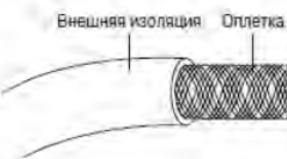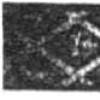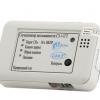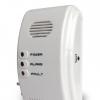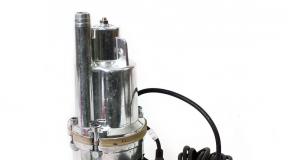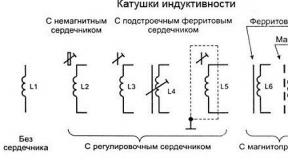Diseases of the central nervous system. Nervous diseases General symptoms of damage to the nervous system
The nervous system is responsible for the work and interconnection of all systems and organs. human body. It unites the central nervous system, consisting of the brain and spinal cord, and the peripheral nervous system, which includes nerves extending from the brain and spinal cord. Nerve endings provide motor activity and sensitivity to all parts of our body. A separate autonomic (vegetative) nervous system inverts the cardiovascular system and other organs.
Diseases nervous system represent a wide and varied field of pathologies various etiologies and symptoms. This is explained by the fact that the nervous system is extremely branched, and each of its subsystems is unique. Most often, a violation of the functions of the nervous system has a detrimental effect on the functions of others. internal organs and systems.
Types of diseases of the nervous system
All diseases of the nervous system can be divided into vascular, infectious, chronically progressive, hereditary and traumatic pathologies.
Vascular diseases are extremely common and dangerous. They often lead to disability or even death of the patient. This group includes cerebrovascular accidents of an acute nature (strokes) and chronically current cerebrovascular insufficiency, which causes changes in the brain. Such diseases can develop due to hypertension or. Vascular diseases of the nervous system are manifested by headaches, nausea and vomiting, decreased sensitivity and impaired motor activity.
Huntington's chorea considered one of the most severe progressive degenerative diseases of the brain. It is a form of hyperkinesis and is characterized by mental disturbances and involuntary rapid movements. The disease is quite rare (10:100,000), affects people of all ages, but the onset of the first symptoms usually occurs in 30-50 years.
Pick's disease is rare but progresses very quickly. This disease of the central nervous system mainly occurs at 50–60 years of age and is manifested by atrophy of the cerebral cortex. Symptoms of pathology are dementia, impaired ability to think logically, speech decay, and so on. The clinical manifestations of Pick's disease are similar to Alzheimer's disease, but the complete disintegration of the personality occurs much faster.
Airborne viruses (arboviruses).
Also, diseases of the nervous system can be transmitted by the placental route during pregnancy (cytomegalovirus, rubella) and through the peripheral nervous system. For example, the rabies virus, herpes, acute poliomyelitis and meningoencephalitis spread in this way.
Among the common causes of diseases of the nervous system are also brain contusions, brain tumors or their metastases, vascular disorders (thrombosis, ruptures or inflammation), heredity or chronic progressive diseases (Alzheimer's disease, chorea, Parkinson's disease, etc.)
The nervous system is also affected by malnutrition, lack of vitamins, cardiac, renal and endocrine diseases. Pathological processes can develop under the influence of various chemicals: opiates, barbiturates, antidepressants, ethyl alcohol, animal poisons and plant origin. It is also possible poisoning with antibiotics, antitumor drugs and heavy metals (mercury, arsenic, lead, bismuth, manganese, thallium, etc.)
Symptoms of diseases of the nervous system
Symptoms of diseases of the nervous system manifest themselves in different ways, very often in the form of movement disorders. The patient is characterized by the development of paresis (decrease in muscle strength) or paralysis, inability to move quickly, tremor, involuntary rapid movements (chorea). It is also possible the appearance of pathological postures (dystonia). Possible violations of coordination and speech, involuntary contractions of different muscle groups, tics, shudders. Tactile sensitivity may also be impaired.
Other important symptoms of diseases of the nervous system are headache(), pain in the back and neck, arms and legs. Pathological changes also affect other types of sensitivity: smell, taste, vision.
Diseases of the nervous system and epileptic seizures, tantrums, sleep and consciousness disorders, mental activity, behavior and psyche are manifested.
Diagnosis of diseases of the nervous system

Diagnosis of diseases of the nervous system involves a neurological examination of the patient. His consciousness, intellect, orientation in space and time, sensitivity, reflexes, and so on are subject to analysis. Sometimes the disease can be detected on the basis of clinical indicators, but more often the diagnosis requires additional studies. These include computed tomography of the brain, which allows to detect neoplasms, hemorrhages and other foci of the disease. A clearer picture is given by magnetic resonance imaging (MRI), and vascular disorders can be detected by angiography and ultrasound.
Lumbar function, radiography or electroencephalography are also used to diagnose diseases of the nervous system.
Other research methods include biopsy, blood test, etc.
Treatment of diseases of the nervous system
Treatment of diseases of the nervous system depends on their type and symptoms, is prescribed by a doctor and requires intensive care in a hospital setting.
To avoid diseases of the nervous system, it is necessary to diagnose and treat infections in time, healthy lifestyle life, giving up alcohol and drugs, eating well, avoiding stress and overwork. If you experience any worrying symptoms, be sure to consult a doctor.
Expert editor: Mochalov Pavel Alexandrovich| MD therapist
Price: from 1200
An experienced neurologist at the SANMEDEKSPERT clinic provides qualified assistance in the treatment of CNS diseases, of which there are many. The human nervous system is a very complex structure that ensures the interaction of the body with the external and internal world. In fact, this is the link that connects all the elements of the body into a single whole. It is the nervous system that regulates the functions of internal organs, mental activity and motor activity.
If we talk about the central nervous system, then it consists of the brain and spinal cord. These organs, in turn, have in their composition a huge number of nerve cells that can be excited and conduct all kinds of signals through themselves to the spinal cord, and then to the brain. The information received is processed by the central nervous system, after which it is transmitted to the motor fibers. This is how reflex movements occur in our body: dilation and contraction of the pupils, muscle contraction, etc.
An experienced doctor will analyze the patient's complaints and perform a detailed examination; Consult on vascular, infectious and demyelinating diseases of the brain; We use the most modern diagnostic equipment that allows us to conduct high-precision examinations.
Leave your phone number.
The clinic administrator will call you back.

Sign up for an appointment
Any disorder or disease of the central nervous system causes malfunctions in its activity and causes a number of symptomatic signs. The specialists of our clinic have everything necessary to accurately identify the disease and prescribe effective treatment.
Classification of CNS diseases
Diseases of the central nervous system can be classified as follows:
- Vascular. chronic insufficiency of the brain, which often occurs in conjunction with cardiovascular pathologies and hypertension. Also, this group of CNS diseases includes acute circulatory disorders in the brain (strokes), which occur most often in adulthood and old age.
- Diseases of the brain. The most common CNS diseases that affect the brain include Alzheimer's disease, Norman-Roberts syndrome, sleep paralysis, hypersomnia, insomnia, etc.
- Infectious. As a rule, they proceed very hard and pose a serious threat to life. Infectious lesions of the central nervous system include meningitis (inflammation of the membranes of the spinal cord and brain), encephalitis (inflammatory brain disease of a viral nature), poliomyelitis (a serious disease characterized by damage to all brain structures), neurosyphilis (develops when infected with pale treponema).
- Demyelinating. One of the most common demyelinating diseases of the central nervous system is multiple sclerosis, which gradually leads to the destruction of the nervous system. This group also includes epilepsy, disseminated encephalomyelitis, myasthenia gravis and polyneuropathy.
The presented classification is not complete, since degenerative, neuromuscular, neuroses, etc. are also distinguished among CNS diseases.
Diseases of the central nervous system are wide range symptomatic manifestations. These include:
- movement disorders (paresis, paralysis, akinesia or chorea, impaired coordination of movements, tremor, etc.);
- violations of tactile sensitivity;
- impaired sense of smell, hearing, vision and other types of sensitivity;
- hysterical and epileptic seizures;
- sleep disorders;
- mental disorders ( fainting, coma);
- mental and emotional disorders.
Diagnosis and treatment in our clinic
An experienced neurologist of our clinic will analyze the patient's complaints and perform a detailed examination. Diagnosis of diseases of the central nervous system necessarily includes an assessment of the patient's consciousness, his reflexes, intelligence, etc.
Some diseases are easily identified by their symptomatic manifestations, but, as a rule, an accurate diagnosis is possible only on the basis of the results of additional studies. In our practice, we use the most modern diagnostic equipment, which allows us to conduct such high-precision studies as:
- computed tomography of the brain;
- angiography;
- electroencephalography;
- radiography;
- electromyography;
- lumbar puncture, etc.
The treatment of each disorder of the central nervous system requires a strictly individual and careful approach. Therapy is selected by the doctor, but it should be understood that some disorders are not reversible, so treatment can be purely supportive and symptomatic.
The main method of treating diseases of the central nervous system is medication, but physiotherapy procedures also have a good effect, physiotherapy and massage. Surgery can be shown in the detection of cysts, tumor neoplasms. As a rule, all operations are performed using modern microsurgical techniques.
Questions and answers:
Can CNS disease be caused by an infection?
Answer: Infectious pathogens can cause disease of the central nervous system. Meningitis, encephalitis, tetanus, poliomyelitis, rabies, and many other CNS diseases are caused by infections and viruses.
Can problems with the central nervous system begin due to a curvature of posture?
Answer: With a curvature of the spine, displacement and rotation of the vertebrae occurs, which negatively affects all organs and systems of the body, including the central nervous system.
Can CNS diseases be congenital?
Answer: Yes they can. There are congenital forms of neuromuscular pathologies, myatonia and other disorders of the central nervous system.
Can vitamin deficiency affect the development of CNS pathologies?
Answer: The central nervous system can suffer from a lack of vitamins, especially a deficiency of B and E vitamins negatively affects it. Often this factor provokes the development of neuropathy optic nerve, polyneuropathy, pellagra and other ailments.
CNS treatment cost
Primary appointment with a neurologist
1500
Appointment of a neurologist based on the results of the examination
2000
Repeated appointment with a neurologist
Nervous system, permeating everything human body, maintains the interconnection of all body systems and internal organs. All pass through it nerve impulses passing through the body.
This concept combines the central and peripheral nervous systems, the first consists of the brain and spinal cord, and the second is their direct continuation in the form of nerve endings necessary to maintain the motor activity of the body, it also provides the ability to feel for all parts of the body. The autonomic nervous system is responsible for maintaining the work of blood vessels and the heart.
That is why diseases of the human nervous system are among the most serious in medical practice.
Nervous diseases manifest themselves in a variety of ways, from a passive and imperceptible effect on the body, manifested in the form of small disruptions circulatory system(cardiovascular dystonia), to the most serious diseases that deprive a person of the ability to move and feel normally (Paralysis, Huntington's chorea, and others).
Such a variety of diseases of the nervous system is caused by ramifications; it consists of many unique subsystems. Violations of its work leads to dysfunction of internal organs.
Risk factors for diseases of the nervous system can be divided into two types - removable and non-removable. The former, as the name suggests, can be combated or prevented from occurring. However, unavoidable factors are innate and must be reckoned with. Let's consider them in more detail.
Heredity. Diseases such as Huntington's chorea or Alzheimer's may appear with some degree of probability in the offspring of the patient, some may occur if there is at least one relative on each side who suffered from diseases.
The most common hereditary diseases of the nervous system:
- Parkinson's disease. It is typical for people of age, whose body is significantly weakened by the time of aging, its signs are sluggish movements, tremor of the limbs, slow movements, changes in intelligence in the direction of weakening.
- Alzheimer's disease. More than others, people over the age of 65 are more susceptible to it. The patient loses the ability to remember, memory weakens, speech is not perceived and not reproduced. The patient's consciousness is confused, he can become irritable and even aggressive. These manifestations lead to death, on average, it occurs 7 years after the first manifestations;
- Amyotrophic lateral sclerosis is not curable, the cause of the manifestation is unknown. Manifested by degenerative damage to motor neurons in the brain. As a result, paralysis occurs, muscles atrophy, including in the respiratory system, which leads to death.
- Huntington's chorea, a severe incurable brain disease. Manifested in the form of hyperkinesis, rapid involuntary movements, mental disorders. Inherited with a 50% chance, extremely rare.
- Pick's disease, rare and rapidly progressing, appears at the age of 50-60, accompanied by atrophy of the cerebral cortex. It leads to dementia, violation of human logic, inability to normal speech.
Age. Diseases of the nervous system have a certain age interval in which the likelihood of its occurrence increases significantly. For example, the syndrome chronic fatigue occurs between 20 and 50 years of age. Tissue degeneration always accompanies the aging process.
Common degenerative diseases of the nervous system:
Gender can also become an additional risk factor, the representatives of the beautiful half of humanity are more prone to mental disorders, eating disorders, phobias, anxiety, suicidal behavior, and other disorders.
Removable factors can appear and disappear during life, these include:
- Chronic diseases. Their development can undermine the psychological state of a person, and difficult situations with a threat to life (injuries, serious illnesses, and others) lead to the same effect. People who are forced to change their lifestyle, break away from their usual social circle, may suffer from such ailments;
- Stress. Many situations in life, such as divorce, financial problems, job loss, failures on the personal front, and others, can cause strong negative emotions. Stress is an inevitable situation in life, but a person is able to prevent its transition into chronic form.
- Alcohol, drugs. Their use destroys the brain and damages the nervous system, its cells atrophy and die, they can lead to various mental disorders.
More about the nervous system and diseases
Symptoms of diseases of the nervous system
Symptoms of nervous diseases are also conditionally divided into several categories.
Movement disorders
They can be expressed in the loss of muscle strength, complete or partial, the muscles relax, soften, do not resist during passive movements. To avoid muscle atrophy, it is necessary to subject them to special procedures, otherwise they lose most of their muscle mass. The disease may not be accompanied by a loss of muscle strength, instead the basal ganglia are affected. Such a manifestation disrupts the functioning of the limb, tremors, involuntary movements, and other symptoms may appear.
Dysfunction of the cerebellum can cause incoordination (ataxia), speech problems (dysarthria), hypotonia of the legs or arms. It can also be manifested by tremor, arrhythmia of large movements, unidirectional involuntary muscle tension and relaxation, and other symptoms. A person loses stability when walking, his weather is disturbed, tactile sensitivity is upset.
Pain
Symptoms of diseases of the nervous system can be manifested by pain, most often it is chronic head pain, migraine (bundle, classic or simple), also pain may appear on the lower back and limbs, in the spine, neck.
Sensory disturbance
The patient loses the ability to perceive smells, or there are violations of smell in the form of hallucinations and erroneous sensations. Vision, eye coordination, pupillary dysfunction, hearing, dizziness, and nervous system disorders may also be impaired.
Epilepsy attacks, tantrums, frequent fainting, abnormal sleep, mental abilities, behavior, excessive anxiety and excitability, a sudden change in mood - all this can also indicate a neurological disease.
Diseases of the central nervous system
The Central Nervous System, abbreviated CNS, consists of neurons and processes, and its key parts are the brain and spinal cord. The central nervous system is responsible for the implementation of simple and complex reflexes, regulates the functioning of human organs and internal systems, maintains the relationship between them, and together they turn the body into a single whole. Nerve endings allow all parts of the body to feel, provide the possibility of movement. The peripheral and autonomic subsystems are also part of it, however, diseases of the central nervous system have their own differences.
They manifest themselves in the form of a violation of the functioning of the organs of the body, and the whole organism. If the ability to feel is disturbed, and motor activity is weakened, the body cannot function normally. By their nature, such diseases can be divided into several types.
infectious diseases
Infectious diseases of the nervous system:
Damage due to trauma. Mechanical impact and damage from them on brain tissues can lead to CNS dysfunction, their symptoms are headache, nausea, memory loss, and others.
Chronic illness CNR, they occur as a consequence of intoxication, individual characteristics of the body, can appear during myasthenia gravis, sclerosis and other similar diseases. Develops gradually.
Diseases of the peripheral nervous system
The peripheral nervous system is based on nerves (cranial and spinal), which provide communication between the central nervous system and all parts of the body and organs. The system has no protection in the form of bones, and there is no blood-brain barrier. This means that it is much easier to damage it mechanically, it is more affected by toxic substances.
According to its functions and structure, it is divided into somatic and vegetative. The first regulates the conscious actions of the body, the second provides a response to external stimuli, supports the circulatory system, stimulates the digestive, sexual and urinary systems.
Diseases of the peripheral nervous system are classified according to:
- Topographic and anatomical principle, the ailments of this group include inflammation of the roots, cords, plexuses and nerves;
- According to etiology, such diseases are caused by infectious infections, toxins that have entered the body, allergic reaction, lack of vitamins, vertebrogenic formations in the bones of the musculoskeletal system;
- According to pathogenesis and pathomorphology, neuritis, neuropathy and neuralgia are distinguished.
In turn, neuropathy can be caused by a malfunction of the cardiovascular system, an allergic response, damage by toxins, or direct damage under mechanical influence, or under the influence of temperature, radiation.
Neuralgia is a group of diseases in which pain is felt in the area where the affected nerves are located. In this case, the nerves transmit pain signals for no real reason.
Symptoms of PNS diseases:
- Sensory disturbances, pain sensations, limbs go numb, the affected part of the body seems to burst from the inside, some areas of the skin lose sensitivity or become hypersensitive;
- Inability to move normally, muscles weaken, stop or respond poorly to commands;
- Vegetative dysfunction, manifested by dryness or moisture of the hands, soles, hands and feet get cold even in warm rooms.
To find out what kind of disease you have to deal with, they carry out diagnostics. Her methods allow to identify and correct the disease. Treatment of diseases includes the use of medicines, physiotherapy, and in case of serious complications, surgery. Treatment should begin as soon as the first signs of the disease have been identified.
Vascular diseases. Violation of the circulatory system may be the result of dysfunction of the autonomic nervous system. They flutter as a result of hypertension, atherosclerosis, are manifested by severe pain in the head, nausea and vomiting, can cause cerebral hemorrhage (stroke) and heart attack.
Vascular diseases of the nervous system:
One of the varieties of diseases of the peripheral nervous system are diseases sciatic nerve. Actually, the only type of such a disease is Sciatica, manifested inflammatory processes in the sciatic nerve. Sometimes the same ailment is called sciatica or neuralgia.
Causes of sciatic nerve disease:
- A hernia in the spine, this phenomenon leads to the prolapse of the nucleus of the intervertebral disc from the spinal canal. A bulging disc pinches the nerve endings;
- Infection, infection with influenza, typhoid, scarlet fever and other similar diseases fills the body with toxins that can provoke inflammation;
- Stenosis leads to a narrowing of the lumen of the canal in the lumbar region, in which the spinal cord is located;
- Spondylolisthesis, leads to a change in the position of the vertebrae in relation to each other;
- Influence of cold temperature
- Osteophytes, bone outgrowths are also the result of osteochondrosis, osteoarthritis or spondylosis.
Prevention of diseases of the nervous system
Unfortunately, the prevention of diseases of the nervous system will not help to get rid of them if they are congenital, other diseases cannot be eliminated by modern medicine, however, certain measures can, if not eliminate the disease, then slow down its development, and reduce the negative effect of them.
The best way to avoid the manifestation of neurological diseases - in a timely manner to treat other diseases that may have similar complications.
Systematic sports activities, maintaining a healthy lifestyle, giving up drugs and alcohol, saturating your body with vitamins and nutrients by eating right can minimize the likelihood of neurological diseases.
At large industrial facilities, a person can be exposed to dangerous toxins, high temperatures and generally work in difficult conditions, in such a situation, employees should always use personal protective equipment, and be aware of the possible occupational diseases.
Children are also not protected from neurological diseases, but their nature can differ significantly from that of adults. The child's body is not fully formed, the same applies to all its individual elements, as well as the psyche. He is prone to fears, he meets many irritants for the first time, he is emotionally unstable, so parents should carefully monitor psychological state their children.
Diseases of the nervous system in children:
- Nervous tic
- Neurosis
- Neuralgia
A nervous tic is an instant muscle contraction, in most cases they are observed on the limbs and muscles of the child's face. These movements are unconscious, most often manifested in a calm state, sometimes they are provoked by nervous tension.
Tiki rituals are manifested by the repetition of certain actions, motor tics - tension of the wings of the nose, rapid blinking, twitching of the cheek. A vocal tic may also appear, when the baby constantly makes certain sounds for no reason. Most often, the cause of the disease is stress, so they are treated only in a psychological way.
Neurosis is a reversible mental disorder, parents quite often miss the signs of this disease.
There are several types of neurosis:
- An obsessive state, the child has fears and fears against their desire;
- Hysterical behavior, children aged 3-6 tend to roll on the floor, scream and resent;
- Depressive neurosis, depressed mood, sad expression, reduced activity - all this often manifests itself in adolescents;
- Fear. Children may suffer from anxiety attacks, which may be accompanied by hallucinations or delusions.
Neurotic manifestations can be caused by various psychological reasons, separation from loved ones, information overload, stress and psychological pressure can lead to stuttering, appetite disorders, and sleep.
Medical practice shows that most often mental workers suffer from neurological diseases, but it is not the cause in itself, the reason is in its improper organization.
As they say: " Best holiday- change of occupation”, this statement is true, since constant monotonous activity exposes the body to excessive stress. To avoid overwork of the nervous system, it is necessary to alternate work and rest.
It is also important to work in favorable conditions, so we can say that the search for a pleasant job that satisfies a person is a kind of prevention of diseases of the nervous system.
Diseases of the central nervous system are extremely diverse, as are the causes that cause them. They can be hereditary and congenital, associated with trauma, infections, metabolic disorders, diseases of the cardiovascular system (see. Hypertonic disease, Atherosclerosis, Cerebrovascular disease).
Diseases of the central nervous system are divided into dystrophic ("degenerative"), demyelinating, inflammatory and tumor. At dystrophic("degenerative") diseases damage to neurons predominates, and the predominant localization of the process may be different: the cerebral cortex (for example, Alzheimer's disease), basal ganglia and midbrain (for example, Huntington's chorea, parkinsonism), motor neurons (for example, amyotrophic lateral sclerosis). Dystrophic in nature are diseases of the central nervous system caused by a deficiency of a number of substances (thiamine, vitamin B 12), metabolic disorders (hepatic encephalopathy), exposure to toxic (alcohol) or physical (irradiation) factors.
TO demyelinating diseases include diseases in which the myelin sheaths are primarily damaged, which are under the control of oligodendroglia (primary demyelinating diseases). In contrast, secondary demyelination is associated with damage to axons. Most common illness this group is multiple sclerosis.
Inflammatory diseases divided into meningitis (see. Children's infections) and encephalitis. Sometimes the process captures both the membranes and brain tissue, then they talk about meningoencephalitis.
Tumor diseases central nervous system have a number of specific features (see.
Among the diseases of the central nervous system, the most significant representatives of each group will be given: Alzheimer's disease, amyotrophic lateral sclerosis, multiple sclerosis, encephalitis; Tumors of the central nervous system have been described previously (see Tumors of the nervous system and brain membranes).
Alzheimer's disease
Alzheimer's disease consider presenile (presenile) dementia or dementia (from lat. de- denial, mens, mentis mind, intelligence). However, a number of authors consider Alzheimer's disease more broadly, including not only presenile, but also senile (senile) dementia, as well as Pick's disease. Presenile and senile dementias, like Pick's disease, differ from other dementias associated with cerebral infarctions, hydrocephalus, encephalitis, slow viral infection, and storage diseases. Presenile dementia is characterized progressive dementia in people aged 40-65 years; if the manifestation of the disease begins after 65 years, dementia is classified as senile. Pick's disease is spoken of in those cases where there is total presenile dementia with the disintegration of speech.
Alzheimer's disease occurs with severe intellectual disorders and emotional lability, while focal neurological symptoms are absent. Clinical manifestations of the disease are associated with progressive general atrophy of the brain, but especially of the frontal, temporal and occipital regions.
Etiology and pathogenesis. The cause and development of the disease is not clear enough. It was assumed that the cause of the disease is an acquired deficiency of acetylcholine and its enzymes in the structures of the cerebral cortex. Recently, it has been shown that the clinical manifestations of Alzheimer's disease are associated with senile cerebral amyloidosis, which is found in 100% of observations. In this regard, there has been a tendency to consider Alzheimer's disease as one of the forms of cerebral senile amyloidosis. Amyloid deposits are found in senile plaques, vessels of the brain and membranes, as well as in the choroid plexuses. It has been established that the cerebral amyloid protein is represented by the 4KD-a protein, the gene of which is localized on the 21st chromosome. Along with the synthesis of extracellularly located amyloid fibrils, which are the basis of the senile plaque, in Alzheimer's disease, pathology is also expressed in intracellular fibrillar structures - cytoskeleton proteins. It is represented by the accumulation in the cytoplasm of neurons of pairwise twisted filaments and straight tubules, which can fill the entire cell body, forming peculiar neurofibrillary plexuses. Filaments of neurofibrillary plexuses have a diameter of 7-9 nm, give a positive reaction to a number of specific proteins (tau protein), microtubule and neurofilament proteins. Pathology of the cytoskeleton is expressed in Alzheimer's disease and in the proximal dendrites, in which actin microfilaments (Hirano bodies) accumulate. The relationship between cytoskeletal pathology and amyloidosis is not well understood, but amyloid appears in brain tissue before neurofibrillary changes.
Pathological anatomy. At autopsy, atrophy of the cerebral cortex is found (thinning of the cortex predominates in the frontal, temporal and
dorsal lobes). In connection with brain atrophy, hydrocephalus often develops.
At in the cortex of the atrophic lobes of the brain, the hippocampus and the amygdala, senile plaques, neurofibrillary plexuses (tangles), damage to neurons, and Hirano bodies are found. Senile plaques and neurofibrillary plexuses are found in all parts of the cerebral cortex, excluding motor and sensory zones, neurofibrillary plexuses are also more often found in the basal nucleus of Meinert, Hirano bodies are detected in neurons in the hippocampus.
Senile plaques consist of foci of amyloid deposits surrounded by pairwise twisted filaments (Fig. 248); on the periphery of the plaques, microglial cells, sometimes astrocytes, are often found. Neurofibrillary plexuses are represented by helical pairwise twisted filaments, detected by silver impregnation methods. They look like tangles or knots of fibrillar material and straight tubules in the cytoplasm of neurons; filamentous masses are ultrastructurally identical to neurofilaments. Neurons in the affected areas are reduced in size, their cytoplasm is vacuolated, contains argyrophilic granules. Hirano bodies, found in the proximal dendrites, have the appearance of eosinophilic inclusions and are represented by an accumulation of oriented actin filaments.
Cause of death in Alzheimer's disease - respiratory infections, bronchopneumonia.
Rice. 248. Alzheimer's disease:
a - senile plaque; silver impregnation according to Bilshovsky; b - amyloid anisotropy in the polarization field. Coloring the Congo red
amyotrophic lateral sclerosis(Charcot's disease) is a progressive disease of the nervous system associated with simultaneous damage to the motor neurons of the anterior and lateral columns of the spinal cord and peripheral nerves. Characterized by the slow development of spastic paresis, mainly of the muscles of the hands, which are joined by muscle atrophy, increased tendon and periosteal reflexes. Men get sick twice as often as women. Clinical manifestations of the disease usually begin in middle age, the steady progression of movement disorders ends in death after a few (2-6) years. Sometimes the disease has an acute course.
Etiology and pathogenesis. The cause and mechanism of the development of the disease is unknown. The role of viruses, immunological and metabolic disorders is discussed. A number of patients have a history of poliomyelitis. In such cases, polio virus antigen is found in jejunal biopsy specimens, and immune complexes are found in blood and renal glomeruli. Based on these data, it is believed that amyotrophic lateral sclerosis is associated with chronic viral infection.
Pathological anatomy. At autopsy, selective atrophy of the anterior motor roots of the spinal cord is found, they are thinned, gray in color; while the posterior sensory roots remain normal. On transverse sections of the spinal cord, the lateral corticospinal tracts are compacted, whitish in color, delimited from other tracts by a clear line. Some patients have atrophy of the precerebral gyrus of the large brain, sometimes atrophy captures the VIII, X and XII pairs of cranial nerves. In all observations, atrophy of skeletal muscles is expressed.
At microscopic examination in the anterior horns of the spinal cord, pronounced changes in nerve cells are found; they are wrinkled or in the form of shadows; extensive fields of loss of neurons are found. Sometimes foci of neuronal loss are found in the brainstem and precentral gyrus. In the nerve fibers of the affected areas of the spinal cord, demyelination, uneven swelling, followed by disintegration and death of the axial cylinders, are determined. Usually, demyelination of nerve fibers extends to peripheral nerves. Often, the pyramidal pathways are involved in the process along their entire length - the spinal cord and medulla oblongata, up to the cerebral cortex. As a rule, there is a reactive proliferation of glial cells. Some observations describe minor lymphoid infiltrates in the spinal cord, its sheath and peripheral nerves along the vessels.
Cause of death patients with amyotrophic lateral sclerosis is cachexia or aspiration pneumonia.
Multiple sclerosis (multiple sclerosis)- a chronic progressive disease characterized by the formation in the brain and spinal cord (mainly in the white matter) of scattered foci of demyelination, in which glia grows with the formation of foci of sclerosis - plaques. Multiple sclerosis is a common disease of the nervous system. It usually begins at the age of 20-40 years, more often in men; proceeds in waves, periods: improvements are replaced by exacerbations of the disease. Differences and multiple localization of lesions of the brain and spinal cord determine the diversity of the clinical manifestations of the disease: intentional trembling, nystagmus, chanted speech, a sharp increase in tendon reflexes, spastic paralysis, visual disturbances. The course of the disease is different. Possible acute and severe course (acute forms of the disease) with rapid development blindness and cerebellar disorders, and possibly a mild course with a slight dysfunction of the central nervous system and its rapid recovery.
Etiology and pathogenesis. The causes of the disease remain unclear. The viral nature of the disease is most likely; in 80% of patients, antiviral antibodies are found in the blood, but the spectrum of these antibodies is quite wide. It is believed that the virus is tropic to oligodendroglia cells related to the processes of myelination. Do not exclude the development and progression of the disease and the role of autoimmunization. Evidence of immune aggression against myelin and oligodendroglia cells has been obtained.
The morphogenesis of sclerotic plaques in multiple sclerosis has been well studied. First, fresh foci of demyelination appear around the veins, which are combined with remyelination processes. Vessels in the lesions expand and are surrounded by infiltrates from lymphoid and plasma cells. In response to destruction, glial cells proliferate, and myelin breakdown products are phagocytosed by macrophages. The end of these changes is sclerosis.
Pathological anatomy. Externally, the superficial sections of the brain and spinal cord are little changed; sometimes edema and thickening of the soft meninges. On sections of the brain and spinal cord, a large number of gray plaques scattered in the white matter (sometimes they have a pinkish or yellowish tint), with clear outlines, up to several centimeters in diameter (Fig. 249), are found. There are always a lot of plaques. They can merge with each other, capturing large territories. Especially often they are found around the ventricles of the brain, in the spinal cord and medulla oblongata, brain stem and visual tubercles, in the white matter of the cerebellum; fewer plaques in the cerebral hemispheres. In the spinal cord lesions can be located symmetrically. The optic nerves, chiasm, and visual pathways are often affected.
 Rice. 249. Multiple sclerosis. Many plaques on the section of the brain (according to M. Eder and P. Gedik)
Rice. 249. Multiple sclerosis. Many plaques on the section of the brain (according to M. Eder and P. Gedik)
At microscopic examination in early stage find foci of demyelination, usually around blood vessels especially veins and venules (perivenous demyelination). Vessels are usually surrounded by lymphocytes and mononuclear cells; axons are relatively intact. With the help of special stains for myelin, it is possible to establish that at first the myelin sheaths swell, tinctorial properties change, uneven contours appear, spherical thickenings along the fibers. Then fragmentation and disintegration of the myelin sheaths occur. Myelin breakdown products are taken up by microglial cells, which turn into granular balls.
In fresh foci, changes in axons can be detected - their increased impregnation with silver, uneven thickness, swelling; severe axonal destruction is rare.
At disease progression (late stage) small perivascular foci of demyelination merge, proliferates appear from microglial cells, cells loaded with lipids. As a result of a productive glial reaction, typical plaques are formed, in which oligodendrites are rare or completely absent.
At exacerbation of the disease against the background of old foci, typical plaques, fresh foci of demyelination appear.
Cause of death. Most often, patients die from pneumonia.
Encephalitis
Encephalitis(from Greek. enkephalon- brain) - inflammation of the brain associated with infection, intoxication or injury. Infection-
tional encephalitis can be caused by viruses, bacteria, fungi, but highest value among them have viral encephalitis.
Viral encephalitis arise in connection with the impact on the brain of various viruses: arboviruses, enteroviruses, cytomegaloviruses, herpes viruses, rabies, viruses of many childhood infections, etc. The disease can have acute, subacute and chronic course, vary in severity depending on the severity clinical manifestations(stupor, cerebral coma, delirium, paralysis, etc.). The etiological diagnosis of viral encephalitis is based on serological tests. Morphological examination allows us to suspect, and often establish the etiology of viral encephalitis. The viral etiology of encephalitis is supported by: 1) mononuclear inflammatory infiltrates from lymphocytes, plasma cells and macrophages; 2) diffuse proliferation of microglia and oligodendroglia with the formation of rod-shaped and amoeboid cells; 3) neuronophagia with the formation of neuronophagic nodules; 4) intranuclear and intracytoplasmic inclusions. A clinical pathologist (pathologist) can establish the etiology of viral encephalitis by identifying the pathogen in the tissue (biopsy) of the brain using immunohistochemical methods and the hybridization method. in situ. Within the territory of former USSR tick-borne encephalitis is the most common.
Tick-borne encephalitis
Tick-borne encephalitis (tick-borne spring-summer encephalitis)- acute viral natural focal disease with transmissible or alimentary transmission. The foci of the disease are found in a number of European and Asian countries, especially in forest areas. However, even in natural foci, the number of patients usually does not exceed several hundred.
Etiology, epidemiology, pathogenesis. The tick-borne encephalitis virus belongs to arboviruses, it contains RNA and is able to multiply in the body of arthropods. The virus is transmitted to humans through ixodid (pasture) ticks. (Ixodes persulcatus And Ixodes ricinus) which are the main reservoir of the virus in nature. The virus enters the stomach of the tick along with the blood of infected wild animals (chipmunks, field mice and birds - a temporary reservoir of infection). From the stomach of the tick, the virus spreads to all its organs, but the virus reaches the highest concentration in the salivary glands, ovary and eggs. Infection of eggs determines the possibility of transovarial transmission of the virus to the offspring of ticks, through their saliva the virus spreads among animals. Sexually mature females "feed" on domestic animals - cattle, goats, sheep, dogs. In settlements, goats are of particular epidemiological importance, with raw milk which the virus is transmitted by the alimentary route. With this mechanism of transmission of the virus, the so-called two-wave meningoencephalitis develops (a person becomes ill with a tick bite), which often has a family character.
The disease is characterized by seasonality: outbreaks usually occur in the spring and summer (spring-summer encephalitis), less often in autumn. Incubation period 7-20 days. The disease begins acutely, fever develops, severe headache, impaired consciousness, sometimes epileptiform seizures, meningeal symptoms, paresis and paralysis (with severe course disease). At protracted course there is a decrease in memory. Muscles atrophy, movement is partially restored. Characterized by paresis and atrophy of the muscles of the neck (drooping head) and muscles of the proximal upper limbs. At chronic course Kozhevnikov epilepsy syndrome develops.
During an epidemic outbreak, it is not uncommon erased forms diseases without clear signs of damage to the nervous system, sometimes meningeal forms. With such forms, a relatively complete recovery is observed.
Pathological anatomy. Macroscopically, hyperemia of the brain vessels, swelling of its tissue, and small hemorrhages are noted. Microscopic picture largely depends on the stage and nature of the course of the disease: acute forms circulatory disorders and an inflammatory exudative reaction predominate, perivascular infiltrates and neuronophagia often occur. At protracted during the course of the disease, the proliferative reaction of glia, including astrocytic, and focal destruction of the nervous system (areas of a spongy nature, accumulations of granular balls) become leading. chronic course encephalitis is characterized by fibrillar gliosis, demyelination, and sometimes atrophy of certain parts of the brain.
Cause of death. In the early stages of the disease (on the 2nd-3rd day), death can occur from boulevard disorders. The causes of death in the late stages of the disease are varied.
06 . 06.2017
A tale about diseases of the human nervous system, a list of which is useful to everyone in order to have an idea of the importance of this issue, hereditary heterogeneity, mental disorders, preventive measures and what the ICD code 10 means. Let's go!
"The head is a dark subject, not studied by science." The phrase that “the mechanism for the development of pathology is unknown” can most often be read specifically about the brain and its sores.
Hello friends! There are about a hundred pathologies of this system. I will divide them into groups, as is customary in official medicine, and dwell on the most famous and formidable in a little more detail. The main thing you need to understand is that these are not “nervous outbreaks”, but a completely different range of problems.
What is wrong with the CNS

I hope everyone knows that "central" is not only what is in the head. It includes all parts of the brain and spinal cord. These diseases are divided into non-infectious and infectious.
Non-infectious should include various origins:
- Tension (tension pain) is the most common condition in which the head hurts due to jumps, uncomfortable posture, eating errors, lack of sleep, hormonal disorders, stuffy rooms, temperature changes (cold, heat) and many other reasons. In fact, the pain here is a syndrome indicating certain deviations from the norm.
- cluster pain. Most doctors agree that the failure of the "biological clock" is to blame for the disease. This state is characterized by the intensity of suffering, sometimes leading a person to suicide attempts.
- Migraine. ICD code 10 ( International Classification Diseases of the 10th revision) - G43. Usually, half of the head hurts with it, and accompanying symptoms (nausea, photophobia) can be observed. They provoke the same stresses, tension, weather, etc.
The next section of non-infectious CNS problems is neurodegenerative conditions.

The most famous:
- Alzheimer's disease (progressive degeneration of the brain with gradual loss of personality and memory);
- multiple sclerosis (an autoimmune pathology in which the myelin sheaths of the brain and spinal cord are disrupted, multiple scars occur and certain functions in organs and tissues fall out, leading to a wide variety of neurological symptoms);
- Creutzfeldt-Jakob - progressive dystrophic changes, the main manifestation of spongiform encephalopathy, or the so-called. mad cow disease;
- Parkinson's (progresses slowly, characteristic of older age);
- neuritis of the optic nerve (often accompanies other ailments of the central nervous system).
In addition to those listed, this group also includes a dozen and a half ailments, a characteristic feature of most of which is their movement in only one direction - to deterioration.
Don't hit on the brain!

The second major section of non-communicable pathologies can be put craniocerebral trauma. These include:
- skull fractures with varying degrees damage to the membranes and neurons;
- concussion (of varying severity, a consequence of the impact of the brain on the skull, without hemorrhages and violations of the cellular structure);
- bruises (with the formation of a wound);
- compression;
- hemorrhages.
It is generally accepted that concussion is the least dangerous of the conditions. Boxers in their knockouts constantly experience concussion, and remain alive. But nothing goes unnoticed, and as a result of such “experiments” on oneself, one can achieve not only persistent dizziness, but also other more serious conditions.
Our enemies are microorganisms

Infectious diseases include a number of pathologies, the most famous of which are:
- rabies - deadly, it is caused by the ability to penetrate the blood-brain barrier (incurable, leads to painful death, spreads through the bites of rabid animals);
- meningitis (caused by meningococci, streptococci, staphylococci, salmonella and some other microbes);
- a number of encephalitis (Lyme disease, tick-borne encephalitis, lethargic, herpetic, etc.);
- Poliomyelitis (caused by a virus, more common in children)
- tetanus (a bacterial non-contagious disease, the pathogen enters the body through skin lesions - wounds, bites);
- progressive paralysis.
These deviations are characterized by the penetration of certain microbes directly into the nervous tissue. Prevention measures include the fight against ticks, stray animals, vaccination, protecting yourself from sources of infection.
Sores of the periphery
 The peripheral system is the conduit connecting the transmission lines between the CNS and the body. It includes cranial and spinal fibers, intervertebral ganglions, and the autonomic system.
The peripheral system is the conduit connecting the transmission lines between the CNS and the body. It includes cranial and spinal fibers, intervertebral ganglions, and the autonomic system.
- With neuralgia, a peripheral nerve is affected, with resulting pain along its path, without impaired motor functions and loss of sensitivity. They can be primary or secondary (due to other problems compressing the transmitting fiber, such as tumors).

- Neuritis is distinguished by the presence of the last two signs.
- Polyneuritis affects many fibers at once.
Violations occur for a number of reasons of a viral and bacterial nature, poisoning and internal ailments. In particular, due to intoxication with uremia, stones when clogged bile duct, etc. This causes pain, sensory disturbances, chilliness, paresis and muscle atrophy.
Of the others, I will name carpal tunnel syndrome, which occurs when the median nerve of the hand is compressed, and various paralysis (in particular, Bell's palsy - neuritis of the facial nerve, the causes of which are still unknown).
Such a legacy will please no one

Hereditary heterogeneity concerns many pathologies. Nervous and mental disorders can be transmitted from ancestors to children.
Congenital and genetically transmitted defects of the central nervous system and the periphery, for the most part, are not treated, and are only corrected, as far as possible, during life. These include a number of syndromes caused by gene defects:
- Friedreich's ataxia;
- Batten's disease (unfortunately, fatal);
- a number of pathologies due to which the mechanism of copper transfer in the body is confused (aceruloplasminemia, Wilson-Konovalov disease);
- myotonia;
- Mobius syndrome;
- spinal muscular atrophy (loss of motor neurons, which affects the voluntary movements of the legs, head and neck).
And like them. Often they show signs already in newborns.
Dangerous neoplasms

Benign and malignant formations can affect any place in the system, significantly impair vital signs and lead to death.
Even a benign tumor, growing in the head, compresses the centers, as a result of which the most different functions organism, which are regulated by the squeezed area.
Of the most common neoplasms, we can name:
- astrocytoma (the name itself suggests that astrocytes grow in this case);
- glioblastoma (more than 50 percent of cases), a rapidly growing, dangerous tumor;
- glioma is the most common primary neoplasm in frequency;
- glomus tumor of the ear - benign, but dangerous for its localization;
- neuroma (as a rule, the name of the tumor comes from the type of cells from which it grows);
- this also includes Proteus syndrome - congenital accelerated growth bones and skin cells, leading to deformity, a deterioration in the quality of life - and a tragic ending.
Two misfortunes that have accompanied us since ancient times

Stroke and epilepsy are completely different ailments, but I want to endure them separately.
Epilepsy is not limited to humans. Dogs, cats and even mice are susceptible to it. This chronic neurological condition has been known for a very long time, and is still not fully understood.
Sudden convulsive seizures used to be called epilepsy. In fact, an epileptic seizure can cause many things, from emotional upheaval to stroke. Therefore, it is especially important to separate true epilepsy from seizures similar to it, caused by other causes. Currently, electroencephalogram and other types of studies are used for diagnosis.
Let's do everything that depends on us so as not to get sick and not be afraid of all these terrible names. The main thing is our activity, and taking care of our metabolism. contact my "Active Weight Loss Course" , read articles, learn to enjoy every day and be active and happy.
That's all for today.
Thank you for reading my post to the end. Share this article with your friends. Subscribe to my blog.
And drove on!
